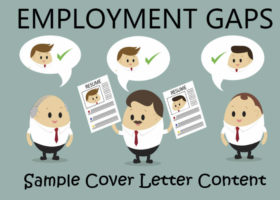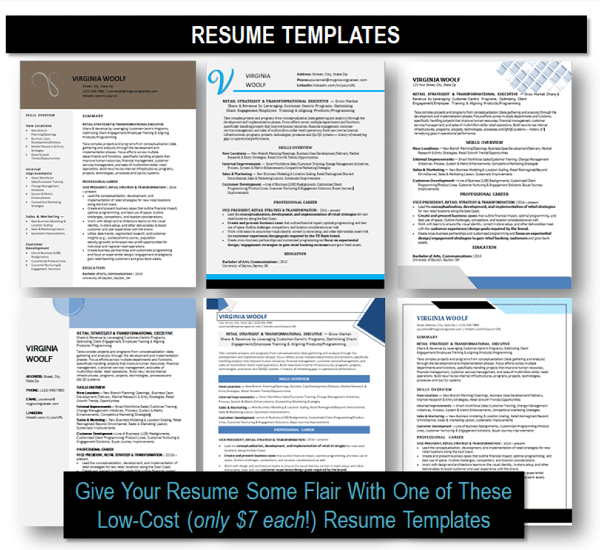
If you’ve struggled with it, know that you’re normal. Yup. 100% human … I’m presuming, of course. 😉
Cover letter writing experts agree. Addressing employment gaps in a cover letter can create the biggest headache.
Many jobseekers believe that date gaps in a work history are equivalent to wearing a scarlet letter … or, so it seems.
But, no matter how painful, addressing unfavorable work situations can be tricky.
To help, below are a few tips (and content samples) to help you address an employment issue. Not knowing your EXACT situation, I covered different situations. One of these examples should fit your current situation.
When you’re employed, there’s nothing to explain. There are good reasons for changing employers. For example, higher pay, better benefits, new horizons, and better working environment.
Sometimes, the reasons can be awkward to explain in a cover letter. For example, when a jerk boss causes you to resign or get fired. [Editorial Note: When fired, check out this in-depth guide on what to do before and after a layoff or firing.]
Fired? Should You Still Explain The Employment Gap in Your Cover Letter?
Maybe.
The truth is, getting fired isn’t an end of the world (even though it might feel like it). The cover letter shouldn’t get the task of explaining what happened at your last employer.
This is why you may not want to explain a firing in your cover letter.
There are other ways of addressing employment gaps (including getting fired). For example, a job interview is a good time.
Despite your best instinct, try to ignore your need for explanation. Explaining employment gaps in the cover letters you write isn’t that critical.
Should You Use Cover Letter “Fudge”?
Tempted?
You could make THIS all go away with a few clicks of a mouse.
Hiding a gap in your employment can be a quick fix.
But, you don’t need me to tell you about the fudge factor, right?
The truth is, there are many great solutions for handling employment gaps.
For example, think about using a different resume format. For example, a combination resume format versus a combination format. And, with your cover letter, don’t talk about the gap … at least for the time being.
This might sound counterintuitive …
A big issue with some employment gaps is when the person doesn’t learn anything from the experience.
Were you fired? Who was at fault, you or them? Be honest. If you, what did you learn? If you screwed up, learn your lesson, take your lump, and move on. Whether you’re 20, 40, 60, or 80 years old, you’re going to screw up and learn more lessons.
Life works that way.
We’re all getting heaping, healthy servings of lessons and lumps. 🙂
Were you let go due to a layoff, merger, departmental downsizing, or heck, you left because your boss was a jerk?
Shit happens!
I’d tell you to get over it; but hey, we’re all pigheaded, not only you. 😉
Did you leave your job to be with your kids or ailing parent for a while?
People understand.
I’m going to tell you something you can’t tell anyone else. Ready?
Okay, here we go … human resources and bosses have kids and ailing parents too.
But, there is a dark side …
Do employers REALLY care about gaps in your work history?
It seems unreasonable that employers obsess over gaps in employment — particularly in light of the economic situation over the past few years. Nonetheless, there are some in American culture that presumes someone who’s experienced a period of unemployment is probably lazy, unproductive or has some character defect. It seems unfair and inaccurate, but it’s an unfortunate fact.
In short, don’t draw undue attention to this in a cover letter.
In fact, unless it’s a gap of over a year — to recover from a long illness, care for a sick relative, take care of young children, or retrain for a new career, for instance — there is no reason to explain it at all.
That is information better left for the interview.
HERE’S A RECAP:
So, in short, your reasons for leaving or wanting to leave a job shouldn’t by default be included in your cover letters.
FREE DOWNLOAD: Click here to get your copy of Professional Cover Letter Examples for Managers & Executives. Available via download.
Let’s say you’re not listening to me. And, you want to explain the employment gap anyway.
Okay, I understand that.
Sometimes we just feel the need to explain the WHYs, if only to make ourselves feel better.
Below I’ve outlined 3 writing examples that explain an employment gap.
Use the one that works best for you:
Sample Cover Letter Content Explaining Gap in Employment
Are you wondering if your cover letter should use the same header as your resume? Here’s a quick how-to cover letter guide to help you with this.
Writing Ideas #1 & #2:
“After working in systems administration for 7 years, I decided to pivot to a new area and took time out from my career to complete a data science master’s degree. An internship with Company X during my studies convinced me that this field is the perfect match for my skills and interests.”
“After completing my master’s in accounting, I worked for 8 years as a senior auditor for Organization Y while also obtaining my CPA license. Following a five-year career break to raise two children, I am now searching for a challenging job in a small- to medium-sized firm. Over the past four years, I have held volunteer jobs as a treasurer and tax advisor for two community organizations.”
Writing Idea #3:
“I was employed for four years as a shift manager in steel manufacturing before my job was eliminated due to large-scale corporate downsizing. In addition to engaging in an aggressive job search, I have been completing an online certificate in (subject) and volunteering as a team coach for a high school softball team.”
As you can see, cover letters can sometimes be useful tools to clarify issues in your employment history.
Just remember when to provide an explanation and when not to.

